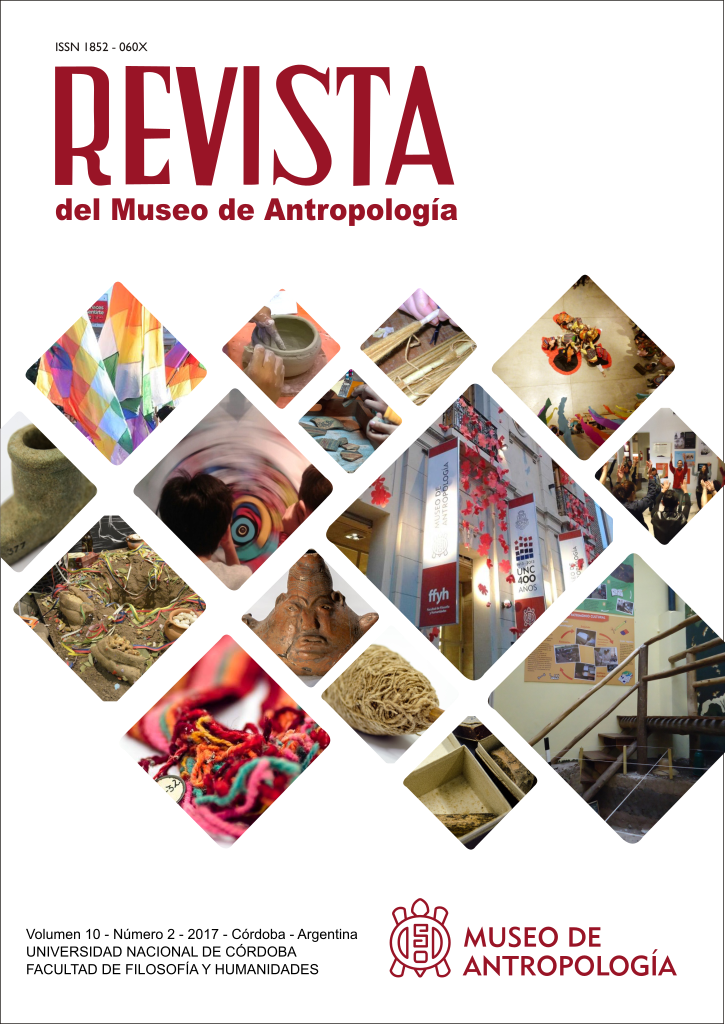Accumulation of lizard remains in the archaeological site Orejas de Burro 1 (province of Santa Cruz, Argentina)
DOI:
https://doi.org/10.31048/1852.4826.v10.n2.15261Keywords:
iguania, zooarchaeology, liolaemus, PatagoniaAbstract
In the present contribution lizards remains recovered in the archaeological site Orejas de Burro 1 (OB1), located in the volcanic field PaliAike, South of the province of Santa Cruz (Argentina) are described. Materials include remains of coronoids, dentaries, frontals, maxillae, premaxillae, long bones,parietals,vertebrae and other bone fragments. Osteological features allow the taxonomic assignment of these elements to the genus Liolaemus. Until now, more than 100 left dentaries and 100 right dentaries have been recognized, supporting the presence of at least 100 individuals. The abundance of owl regurgitation pellets would explain the entrance of the lizard remains in the site. The record of lizards in OB1 is the third recognition of the genus Liolaemus in an archaeological site of Argentina, constituting the southernmost finding until now, and the most abundant and diverse in osteological elements. So far, the archaeological sites of Patagonia are characterized by the taxonomic homogeneity of lizards, where the only taxon recognized is Liolaemus.Downloads
References
Albino, A. M. 2005. A late Quaternary lizard assemblage from the Southern Pampean Region of Argentina.Journal of VertebratePaleontology 25: 185?191.
Albino, A. M. 2008. Lagartos iguanios del Colhuehuapense (Mioceno temprano) de Gaiman (provincia del Chubut, Argentina). Ameghiniana45: 775?782.
Albino A. M., R. H. Albino. 2004. Los Reptiles de los sitios arqueológicos de la Argentina y la bibliografía para su estudio. Comunicaciones del Museo Provincial de Ciencias Naturales “Florentino Ameghino” (Nueva Serie) 9: 1?16.
Albino, A. M., D. Kligmann. 2007. An accumulation of bone remains of two Liolaemus species in a Holocene archaeological site of the Argentinian Puna. Amphibia-Reptilia 28: 154?158.
Albino, A. M., D. Kligmann. 2009. Inusual hallazgo de anfisbénidos (Squamata, Amphisbaenidae) en un yacimiento arqueológico de Argentina. Revista Española de Herpetología 23: 99?106.
Albino, A. M., N. Franco. 2011. Lagartijas (Iguania: Familia Liolaemidae) procedentes del sitio arqueológico Bi Aike Cueva 3 (Provincia de Santa Cruz, Argentina). Anales del Instituto de la Patagonia39: 127-131.
Barberena, R., A. Blasi y C. Castiñeira. 2006. Geoarqueología en Pali Aike: Cueva Orejas de Burro 1 (Patagonia, Argentina). Magallania 34 119?138.
Breitman, M. F., I. Minoli, L. J. Avila, C. D. Medina, J. W. Sites y M. Morando. 2014. Lagartijas de la provincia de Santa Cruz, Argentina: distribución geográfica, diversidad genética y estado de conservación. Cuadernos de Herpetología 28: 83?110.
Cei, J. M. 1986. Reptiles del Centro, Centro-oeste y Sur de la Argentina. Herpetofauna de las Zonas Áridas y Semiáridas. Monografie 4, 1?527, Museo Regionale di ScienzeNaturali, Torino.
Cei, J.M. 1993. Reptiles del Noroeste, Nordeste y Este de la Argentina. Herpetofauna de las Selvas Subtropicales, Puna y Pampas. Monografie 14, 1?949, Museo Regionale di ScienzeNaturali. Torino.
Donoso-Barros, R. 1966. Reptiles de Chile, 1?458,Editorial Universidad de Chile. Santiago de Chile.
Etheridge, R. 1995. Redescription of CtenoblepharysadspersaTschudi, 1845, and the taxonomy of Liolaeminae (Reptilia: Squamata: Tropiduridae). American Museum Novitates 3142: 1?34.
Etheridge, R. 2000. A review of lizards of the Liolaemuswiegmannii group (Squamata, Iguania, Tropiduridae), and a history of morphological change in the sand-dwelling species.Herpetological Monographs 14: 293?352.
Frost, D. R., R. Etheridge. 1989. A phylogenetic analysis and taxonomy of iguanian lizards (Reptilia: Squamata). The University of Kansas, Museum of Natural History, Miscellaneous Publication 81: 1?65.
Frost, D. R., R. Etheridge, D. Janies y T. A. Titus. 2001. Total evidence, sequence alignment, evolution of polychrotid lizards, and a reclassification of the Iguania (Squamata: Iguania). American Museum Novitates 3343: 1?38.
Kligmann, D., A. M. Albino y E. Pais. 2010. ¿Anfisbenas para los dioses?Zooarqueología de una ofrenda animal. Izeta, A. D., G. L. MengoniGoñalons (Eds.), De la Puna a las Sierras: Avances y Perspectivas en Zooarqueología Andina, 89?120, South AmericaArchaeology Series, British ArchaeologicalReports.
L’Heureux, G. L. 2008.La arqueofauna del campo volcánico Pali Aike. El sitio Orejas de Burro 1, Santa Cruz, Argentina. Magallania 36: 65?78.
L’Heureux, G. L., Barberena, R. 2008. Evidencias bioarqueológicas en Patagonia meridional: el sitio Orejas de Burro 1 (Pali Aike, provincia de Santa Cruz).InterseccionesenAntropología 9: 11?24.
Lobo, F. 2001. A phylogenetic analysis of lizards of the Liolaemuschiliensisgroup (Iguania: Tropiduridae). Herpetological Journal 11: 137?150.
Núñez, H., T. W. Stafford y D. Frassinetti. 2005. Primer registro de fósiles de Liolaemusen Chile (Reptilia, Sauria). Noticiario mensual del Museo Nacional de Historia Natural 356: 3?7.
Quintana, C., D. Mazzanti. 2001. Selección y aprovechamiento de recursos faunísticos. D. Mazzanti y Quintana, C. (Eds.), Cueva Tixi: Cazadores y recolectores de las sierras de Tandilia Oriental. 1. Geología, Paleontología y Zooarqueología, Publicación Especial 1, 181?210, Laboratorio de Arqueología, Universidad Nacional de Mar del Plata, Mar del Plata.
Schulte, J. A., J. P. Valladares y A. Larson. 2003. Phylogenetic relationships within Iguanidae inferred using molecular and morphological data and a phylogenetic taxonomy of iguanian lizards. Herpetologica 59: 399–419.
Scolaro, A. 2005. Reptiles Patagónicos: Sur. Una Guía de Campo, 1?80, Ediciones Universidad Nacional de la Patagonia, Trelew.
Van Devender, T. 1977. Observations on the argentine iguanid lizard Leiosaurus belliDuméril and Bibron (Reptilia, Lacertilia, Iguanidae).Journal of Herpetology 11: 238?241.
Downloads
Published
Issue
Section
License
Those authors who have publications with this Journalaccept the following terms:
a. Authors will retain their copyrights and guarantee the journal the right of first publication of their work, which will be simultaneously subject to the Creative Commons Attribution License (Licencia de reconocimiento de Creative Commons) that allows third parties to share the work as long as its author and his first publication in this journal.
b. Authors may adopt other non-exclusive licensing agreements for the distribution of the version of the published work (eg, deposit it in an institutional electronic file or publish it in a monographic volume) provided that the initial publication in this journal is indicated.
c. Authors are allowed and recommended to disseminate their work on the Internet (eg in institutional telematic archives or on their website) before and during the submission process, which can lead to interesting exchanges and increase citations of the published work. (See The Effect of Open Access - El efecto del acceso abierto)












